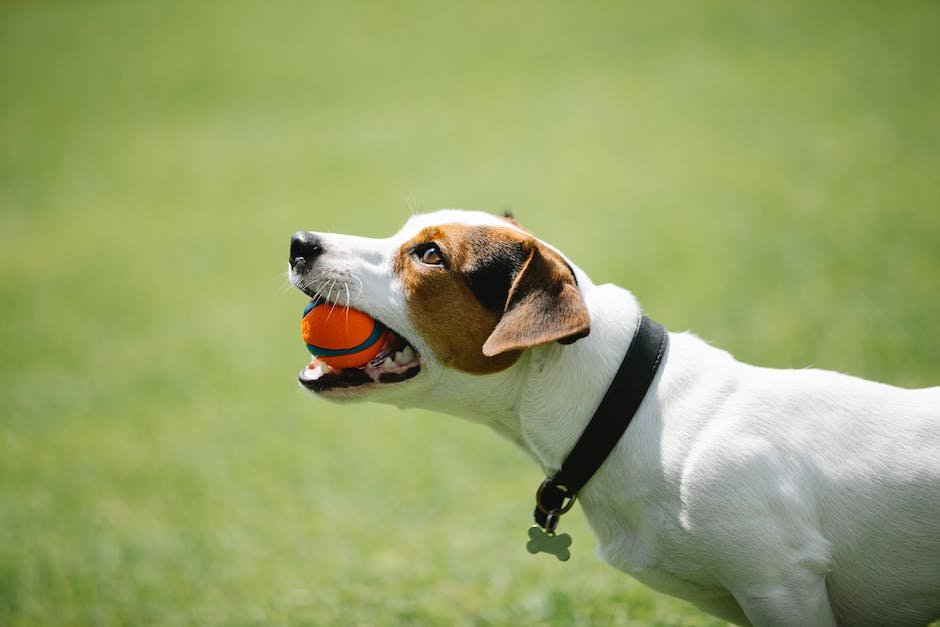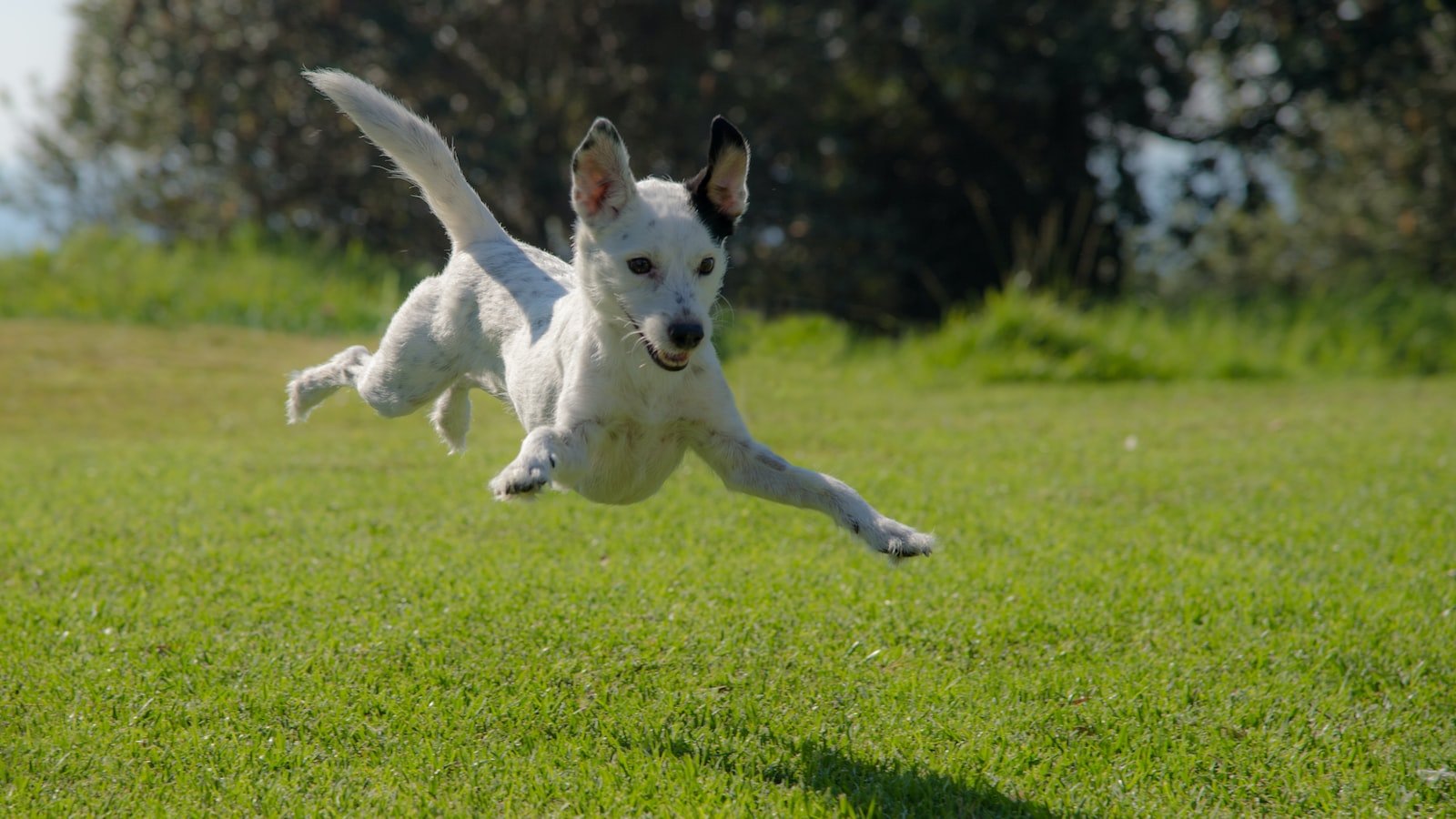A melodious moonlit night can quickly turn into a howling hound symphony, leaving both owners and neighbors exhausted and yearning for silence. Whether it’s triggered by a passing siren, loneliness, separation anxiety, or simply an instinctive response to the call of the wild, a dog’s howling can sometimes become undesirable. But fear not, dear pet owners, for there is hope! This comprehensive guide aims to unravel the mysterious world of canine howling and equip you with the knowledge and techniques required to bring harmony back into your home. Prepare yourself for a journey of discovery, as we delve into the frequently asked questions about training your beloved four-legged companion to curb their passionate aria in How to Train a Dog to Stop Howling: FAQs.
Table of Contents
- Training a Dog to Stop Howling: FAQs
- Understanding the Root Causes of Howling Behavior
- Key Factors to Consider When Training a Dog to Stop Howling
- Effective Techniques for Curbing Excessive Howling
- Creating a Consistent Routine to Reinforce Quiet Behavior
- Additional Tips and Resources for Successfully Addressing Howling
- Q&A
- Insights and Conclusions

Training a Dog to Stop Howling: FAQs
Curious about how to train your dog to stop howling? We’ve compiled a list of frequently asked questions to help you understand the process and provide you with some guidance. Check out the answers below to get started on building a peaceful and harmonious relationship with your furry friend.
- Q: Why does my dog howl?
- Q: Can I use punishment to stop my dog from howling?
- Q: How can I train my dog to stop howling?
Dogs howl for various reasons, such as expressing their emotions, seeking attention, or communicating with other dogs. It’s important to identify the root cause of your dog’s howling to address it effectively.
No, punishment is not recommended when training your dog to stop howling. It can create fear and anxiety, making the problem worse. Instead, focus on positive reinforcement techniques such as rewards and consistency to encourage desired behavior.
Training your dog to stop howling involves several steps. Firstly, provide mental and physical stimulation to prevent boredom. Secondly, teach your dog the “quiet” command and reward them when they respond correctly. Lastly, address any underlying issues that may contribute to excessive howling, such as separation anxiety, and seek professional help if needed.
Remember, training a dog to stop howling requires patience and consistency. By understanding your dog’s needs and using positive reinforcement, you can embark on a successful training journey that strengthens the bond between you and your furry companion.

Understanding the Root Causes of Howling Behavior
Howling behavior in animals can be intriguing yet puzzling at times. is essential for pet owners and wildlife enthusiasts alike. By delving into the reasons behind this captivating vocalization, we can gain insight into the world of the howler.
1. Communication: Howling serves as a powerful tool for communication among animals, particularly wolves and their kin. It allows individuals to convey messages over long distances, such as claiming territory, coordinating hunts, and signaling danger. The unique pitch, tone, and duration of howls can even help identify specific individuals within a pack.
2. Social Bonding: Howling is also a means of reinforcing social bonds within a group. It strengthens the sense of belonging and establishes a unified front. The synchronous howling of pack members creates a symphony of sound that not only intimidates potential threats but also fosters a sense of togetherness among the group.
3. Expression of Emotions: Howling behavior can also be linked to the expression of emotions. It is often observed during times of excitement, joy, or frustration. The melodious wail of a lone wolf echoing through the night may reflect their longing for companionship or a release of built-up tension.
By comprehending the underlying motivations behind howling behavior, we can gain a deeper appreciation for the natural world and the intricate ways in which animals communicate. Whether it’s the haunting howl of a wolf or the harmonious chorus of a coyote pack, these vocalizations serve as a fascinating reminder of the richness and complexity of the animal kingdom.

Key Factors to Consider When Training a Dog to Stop Howling
When it comes to training your dog to stop howling, there are several key factors to consider. Understanding these factors and implementing the right techniques can help you effectively communicate with your furry friend and address their howling behavior. Here are some important aspects to keep in mind:
Consistency:
Consistency is crucial in dog training. Dogs thrive on routine and repetition, so it’s vital to establish consistent rules and expectations when it comes to their howling. Ensure that everyone in the household follows the same training techniques and reinforces the desired behaviors consistently. This will prevent confusion for your dog and speed up the learning process.
Positive Reinforcement:
Positive reinforcement is a highly effective method for training dogs. Whenever your dog exhibits a desired behavior, such as remaining silent when they would typically howl, be sure to praise and reward them. Use treats, toys, or verbal affirmation to reinforce their good behavior. Avoid punishment or scolding, as it can create fear and anxiety in your furry friend, which may exacerbate their howling habits.
Identify Triggers:
Identifying the triggers for your dog’s howling can be instrumental in curbing the behavior. Is your dog howling due to loneliness, boredom, attention-seeking, or anxiety? Understanding the underlying cause can help you tailor your training approach accordingly. For example, if your dog howls when they are anxious, you can gradually expose them to the trigger in a controlled and positive manner to desensitize their response.
By considering these key factors and incorporating appropriate techniques, you can work towards teaching your dog to stop howling and establish better communication with them. Remember to be patient, consistent, and kind throughout the training process, as positive reinforcement and understanding are the keys to success.

Effective Techniques for Curbing Excessive Howling
Dogs use howling as a means of communication, but excessive howling can be both disruptive and worrisome for both you and your neighbors. Thankfully, there are effective techniques you can use to address this behavior and create a harmonious living environment for all. Remember, consistency and patience are key when implementing these techniques.
1. Identifying the root cause: Before addressing the excessive howling, it’s important to identify the underlying cause. Are they bored, anxious, or seeking attention? By understanding the trigger, you can tailor your approach accordingly.
2. Regular exercise and mental stimulation: A tired dog is a happy dog, and one less likely to howl excessively. Incorporate daily walks, play sessions, and interactive toys into their routine. Mental stimulation through obedience training or puzzle toys can help redirect their energy and keep their minds occupied.
3. Positive reinforcement: Dogs respond well to positive reinforcement. When your dog remains quiet in situations that typically trigger howling, praise and reward them with treats or affection. This reinforces the behavior you desire and helps them associate calmness with positive outcomes.
4. Creating a calm environment: Ensure your dog’s environment is conducive to relaxation. Provide a cozy den-like space with a comfortable bed where they can retreat. Consider using white noise or relaxing music to drown out external triggers. Additionally, try to minimize sudden loud noises or disturbances that may trigger their howling.
5. Professional guidance: For persistent or complex cases, seeking professional guidance is vital. A qualified dog trainer or behaviorist can assess your dog’s unique needs and develop a tailored training plan. They can provide expert advice and support throughout the process, increasing your chances of success.
Remember, every dog is different, and what works for one may not work for another. By implementing these techniques and consistently reinforcing positive behavior, you can effectively curb excessive howling and foster a peaceful and happy environment for your furry friend.
Creating a Consistent Routine to Reinforce Quiet Behavior
Establishing a consistent routine can be an effective way to reinforce quiet behavior in individuals. By following a structured schedule, you can create an environment that encourages tranquility and fosters a sense of discipline. Here are some tips to help you establish a routine that promotes quiet behavior:
- Set Clear Expectations: Clearly communicate your expectations regarding quiet behavior to everyone involved. This will provide a baseline for establishing a routine.
- Create a designated quiet space: Designate a specific area where individuals can go to engage in quiet activities such as reading or meditation. This space should be free from distractions and noise.
- Establish Quiet Time: Schedule specific periods during the day where everyone is expected to engage in quiet activities. This can be in the form of designated quiet hours or short breaks throughout the day.
- Use Visual Cues: Visual cues can be helpful in reminding individuals to engage in quiet behavior. Consider using signs or symbols that serve as a reminder to keep noise levels down in certain areas.
- Provide Rewards and Reinforcement: Implement a system where individuals who consistently demonstrate quiet behavior are rewarded. Whether it’s through praise, small incentives, or privileges, positive reinforcement can go a long way in reinforcing the desired behavior.
Remember, consistency is key when trying to establish a routine, and it may take some time for individuals to adjust. By creating a supportive environment that promotes quiet behavior through a structured routine, you can encourage a peaceful atmosphere and enhance overall well-being.
Additional Tips and Resources for Successfully Addressing Howling
When it comes to dealing with howling behavior in your furry friend, here are a few tips and resources to help you navigate this unique challenge:
- Consistency is key: Establishing a consistent routine for your dog can work wonders in minimizing unnecessary howling. Stick to set mealtimes, exercise schedules, and sleep routines to create a sense of stability for your furry companion.
- Provide mental stimulation: Often, excessive howling can be a result of boredom or pent-up energy. Engage your dog in mentally stimulating activities such as puzzle toys, training sessions, or interactive games, ensuring they have an outlet for their restless minds.
- Consider environmental factors: Assess your dog’s surroundings for potential triggers that may elicit howling. Is there excessive noise, loneliness, or separation anxiety? Address these factors by creating a safe and calm environment, using noise-canceling tools or providing comforting items such as blankets or toys.
For further information and support, explore these resources:
- Professional dog training: Enlist the help of a professional dog trainer or behaviorist who specializes in howling and can provide personalized guidance on how to address the behavior effectively.
- Online communities and forums: Joining online dog owner communities can be a great way to connect with individuals facing similar challenges. Share experiences, seek advice, and gain insights from fellow dog lovers who have successfully tackled howling issues.
- Books and literature: Many reputable books and guides are available that delve into the intricacies of dog behavior and effective training techniques. Consider referring to these resources to gain a deeper understanding of howling and discover alternative methods for addressing the behavior.
Remember, each dog is unique and responds differently to various training methods. Stay patient, show love, and don’t hesitate to ask for professional help if needed. With dedication and understanding, you can help your furry friend conquer their howling tendencies and achieve a happier, more peaceful coexistence.
Q&A
How can I train my dog to stop howling?
To train your dog to stop howling, start by identifying the triggers that make them howl. Then, use positive reinforcement techniques to redirect their behavior and reward them for staying calm. Consistency and patience are key in this process.
Is howling normal for dogs?
Yes, howling is a normal form of communication for dogs. However, excessive or prolonged howling may indicate distress or an underlying issue that needs to be addressed.
Why does my dog howl when I leave the house?
Dogs often howl when they experience separation anxiety or feel stressed when their owners leave. To tackle this, gradually accustom your dog to your departures by making your exits and returns low-key. Creating a calm environment with treats and toys beforehand can help alleviate their anxiety.
Can I use punishment to stop my dog from howling?
Using punishment to stop your dog from howling is not recommended. It can create fear and worsen their behavior. It is more effective to focus on positive reinforcement, rewarding your dog when they are quiet and ignoring the howling when it occurs.
Should I get my dog checked by a vet if they suddenly start howling?
If your dog suddenly starts howling excessively or in a different manner, it is advisable to have them checked by a veterinarian. Sudden changes in behavior may indicate pain, discomfort, or an underlying medical condition that requires professional attention.
Can getting another dog help stop the howling?
Introducing another dog to your household may or may not stop the howling. Some dogs may howl less when they have a companion, while others may be influenced to howl more. It depends on the individual dogs and their behavior patterns.
Are there any training resources available for this specific issue?
Yes, there are various training resources available to help you address howling in dogs. Online tutorials, books, and professional dog trainers can provide guidance and personalized solutions tailored to your dog’s specific needs.
Insights and Conclusions
In the symphony of canine communication, howling is a distinct melody that can either charm or irk us humans. With the right guidance, patience, and understanding, you have embarked on a journey to train your howling hound into a harmonious companion. Through the depths of howling inquiries, we have harmonized the most frequently asked questions, and now it’s time to part ways. But fear not, this is merely the closing note, not the final chord.
As you venture forth, armed with knowledge, remember that each dog’s howl is as unique as a snowflake. From the soulful huskies to the melodious beagles, embrace the individuality of your furry friend and discover the depths of their howling ways. Be prepared to observe, to learn, and to adapt your training techniques to fit their distinct personalities.
Mastering the art of silence is no easy quest, but remember, the key lies not in suppressing their wild nature, but in channeling their energy in new, exciting directions. Like an orchestra conductor, create a harmonious environment where positive reinforcement dances alongside consistency.
Your journey may be filled with questions, doubts, and moments of exasperation, but trust that every note played, every counter-rhythm explored, brings you closer to the ultimate triumph. A symphony of understanding between you and your canine companion, a bond deeper than any harmonious sonata.
The final measure of this composition is upon us, but the music doesn’t end here. Armed with these FAQs, you possess the tools to master the art of silencing the howl. Remember, patience, consistency, and understanding are the keys to unlocking the secret chorus hidden within your dog’s soul.
So, embrace this new chapter, dear reader, and continue to dance to the rhythm of discovery. Let the bond between you and your furry friend grow stronger with every passing day. As you navigate the path to silence, cherish the journey, relish in the gentle hums and occasional symphonies of your four-legged companion. Together, you two are destined to compose a lifelong masterpiece, leaving societal opinions to fade into the background, for the soul of a howling dog knows no boundaries.
May your training be filled with harmony and joy, as you teach your dog the power of a gentle whisper amongst the roaring sea of howls. Remember, practice makes perfect, and love conquers all. So, go forth, embrace the adventure, and silence the howl, one melodious step at a time.
As an affiliate, my content may feature links to products I personally use and recommend. By taking action, like subscribing or making a purchase, you’ll be supporting my work and fueling my taco cravings at the same time. Win-win, right?
Want to read more? Check out our Affiliate Disclosure page.